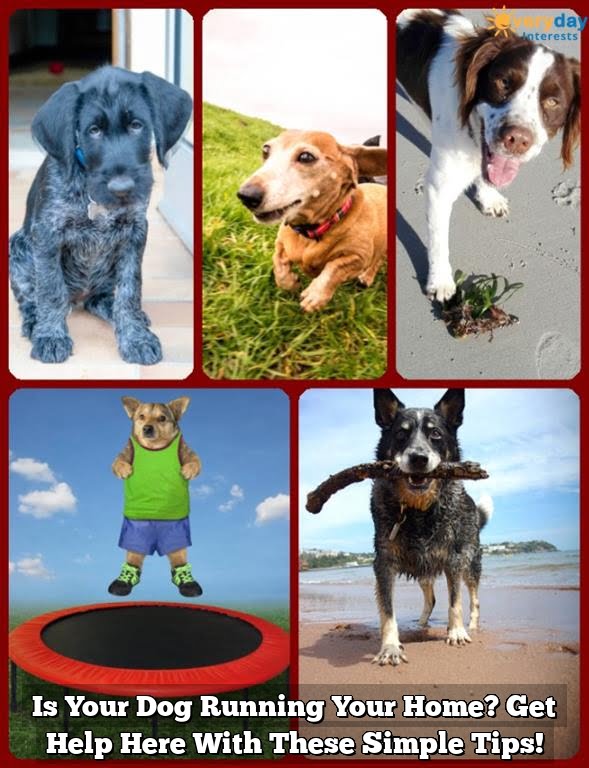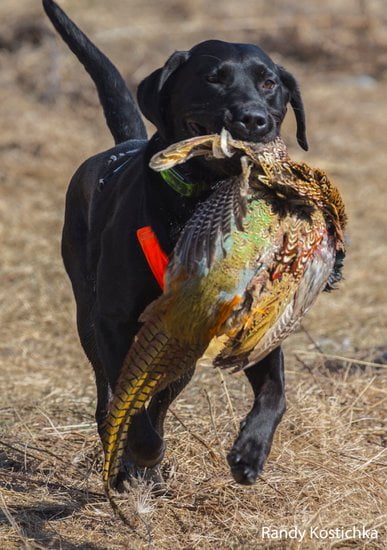Training your dog to get help can be a crucial skill that could potentially save their life or someone else’s in an emergency. By teaching your furry companion how to seek assistance when needed, you are empowering them with the ability to communicate distress signals effectively. This article will guide you through the process of training your dog to get help, from recognizing signs of distress to advanced techniques for specific situations.
Understanding the importance of teaching your dog to get help goes beyond just obedience training – it’s a matter of safety and well-being for both your pet and those around them. By being able to identify signs when your dog needs help and establishing trust and communication, you are laying the groundwork for effective training.
Building a strong relationship with your dog not only enhances their quality of life but also ensures that they can convey messages of distress or emergency accurately.
In the following sections, we will delve into basic commands that you can teach your dog as a foundation for responding to emergencies, as well as advanced training techniques for more specific actions. Roleplaying exercises and positive reinforcement methods will also be discussed to help reinforce the training effectively.
Remember, consistency and patience are key to successfully training your dog to get help, and knowing when to seek professional assistance is equally important in specialized cases. Let’s embark on this journey together towards ensuring the safety and well-being of our beloved furry companions.
Identifying Signs When Your Dog Needs Help
Recognizing Signs of Distress
One of the fundamental aspects of training your dog to get help is being able to identify when they are in distress or need assistance. Dogs communicate through body language, vocalizations, and behavior. Signs of distress may include excessive panting, drooling, whining, pacing, restlessness, trembling, or changes in appetite. It is essential for dog owners to pay attention to these subtle cues to intervene promptly when necessary.
Understanding Signals of Emergency
In addition to signs of general distress, it is crucial for dog owners to recognize signals that indicate a more serious emergency situation. These signs may include collapse, sudden disorientation, difficulty breathing, seizures, bleeding that does not stop, or ingestion of toxic substances. Knowing how to differentiate between distress and emergency signals can save valuable time in getting your dog the help they need.
Training Your Dog to Communicate Their Needs
To effectively train your dog to get help when needed, you must first establish a strong foundation of trust and communication. By fostering a bond based on mutual understanding and respect, you can ensure that your dog feels comfortable and confident in expressing their needs.
Use positive reinforcement techniques such as treats, praise, and rewards when your dog exhibits desired behaviors like signaling for help. With patience and consistency, you can empower your furry companion to communicate effectively in times of distress or emergencies.
Establishing Trust and Communication With Your Dog
Building a strong bond with your furry friend is essential when it comes to training them effectively, especially in teaching them how to get help during emergencies. By establishing trust and clear communication, you can ensure that your dog understands what is expected of them and feels confident in their abilities to assist in times of need. Here are some key strategies to help you strengthen your relationship with your dog:
- Spend quality time together: Quality bonding time is crucial for building a strong connection with your dog. Whether it’s going for walks, playing fetch, or simply cuddling on the couch, make sure to dedicate time each day to engage with your pet.
- Use positive reinforcement: Positive reinforcement is a powerful tool in training dogs and can help foster trust between you and your furry companion. Rewarding good behavior with treats, praise, or playtime will motivate your dog to continue learning and following commands.
- Communicate effectively: Dogs rely heavily on non-verbal cues and body language to understand their humans. Make sure to use consistent signals and cues when training your dog, such as hand gestures or verbal commands paired with actions.
By focusing on building trust and open lines of communication with your dog, you can set a solid foundation for successful training on how to get help when needed.
Remember that every interaction with your dog is an opportunity to reinforce the bond between you both. By incorporating these strategies into your daily routine, you can create a strong relationship based on trust, understanding, and effective communication.
Ultimately, the stronger the connection you have with your dog, the more responsive they will be to training and the more confidently they will be able to perform tasks such as seeking help during emergencies. With patience, consistency, and love, you can establish a deep bond that will benefit both you and your four-legged companion for years to come.
Basic Commands to Teach Your Dog
Training your dog to get help during emergencies is a crucial skill that can potentially save their life or the lives of others. Teaching basic commands to your furry friend lays the foundation for a quick and effective response when needed. One essential command to start with is “come.” This command ensures that your dog will come to you promptly when called, which is vital in emergency situations where swift action is necessary.
Another fundamental command to teach your dog is “stay.” By mastering this command, your dog will learn to stay put in one place until given further instructions. This can be incredibly useful in instances where you need your dog to remain in a safe spot while you go seek help or assess the situation.
Additionally, teaching your dog the “wait” command can be beneficial in emergencies. This command instructs your dog to pause and not proceed any further, which can prevent them from running into dangerous situations.
Incorporating these basic commands into your training routine will not only prepare your dog for emergencies but also strengthen the bond between you and your pet. Consistency and practice are key when teaching these commands, so be patient with your furry companion as they learn. Remember to use positive reinforcement techniques such as treats, praise, or playtime to motivate and reward good behavior. With dedication and persistence, you can effectively train your dog to get help when needed.
| Command | Description |
|---|---|
| Come | Ensure that your dog comes promptly when called. |
| Stay | Teach your dog to remain in one place until given further instructions. |
| Wait | Instruct your dog to pause and not proceed any further. |
Advanced Training Techniques
Teaching Your Dog to Fetch Help Items
One important advanced training technique for teaching your dog to get help in different situations is to train them to fetch specific items. This can include a phone, a medical alert device, or even a first aid kit. Start by associating the item with a command such as “get help” or “fetch help”.
Use positive reinforcement techniques like treats and praise when they bring you the item. Practice this regularly to reinforce the behavior and ensure they are prepared to assist in emergencies.
Training Your Dog to Bark for Help
Another crucial action for your dog to learn is how to bark for help when needed. Start by teaching them a command like “bark for help” or “alert”. Encourage barking during training sessions and reward them when they respond appropriately. It’s important to distinguish between play barking and actual distress barking, so make sure you only reward the desired behavior. With consistent practice, your dog will be able to alert others when you need assistance.
Guiding Your Dog in Seeking Aid
In some situations, your dog may need to guide someone else to you for help. Train them on how to lead someone by tugging on clothing or gently pulling them towards you. Use a command like “lead me” or “guide”.
Practice this with a trusted friend or family member acting as the person needing assistance. Reward your dog for successfully guiding the person towards you. This skill can be invaluable in situations where verbal communication is not possible, ensuring that your dog can effectively seek aid for you in various scenarios.
Remember that consistency and patience are key in training your dog these advanced techniques. Work on each skill regularly, provide positive reinforcement, and always keep training sessions engaging and rewarding for your furry companion. With dedication and effort, your dog will become adept at getting help in different situations, potentially saving lives in emergencies.
Roleplaying Exercises
One important roleplaying exercise is to act out a scenario where you are in distress or injured, prompting your dog to seek help from a specific person or bring a phone to call for assistance. Start by using basic commands such as “go get help” or “fetch the phone” to guide your dog on what actions to take.
With consistent practice, your dog will learn to associate these commands with seeking help and will be better prepared to assist in an emergency situation.
In addition to practicing scenarios where you need help, you can also simulate scenarios where someone else requires assistance. This can include scenarios where a family member or friend pretends to be in distress, allowing your dog to practice responding to different individuals in need. By varying the situations and incorporating different people into the roleplaying exercises, you are helping your dog generalize their training and respond appropriately no matter who needs help.
| Roleplaying Exercise Strategies | Benefits |
|---|---|
| Simulating distress scenarios for the owner | Reinforces commands for seeking help |
| Practicing with different individuals in need | Helps generalize training for various situations |
Utilizing Positive Reinforcement
Positive reinforcement is a crucial aspect of training your dog to get help in times of need. By using rewards to reinforce desired behaviors, you can effectively encourage your dog to repeat those actions when faced with an emergency situation. Here are some reward-based training methods that can help you in teaching your dog how to seek assistance:
- Use treats: Treats are a great way to motivate your dog and reward them for displaying the desired behavior. Make sure to use high-value treats that your dog loves to maximize motivation.
- Verbal praise: Dogs thrive on positive feedback from their owners. Use enthusiastic verbal praise such as “Good job.” or “Well done.” when your dog follows through with the trained behavior.
- Physical affection: Many dogs respond well to physical touch as a form of positive reinforcement. Give your pup a pat on the head or a belly rub when they successfully demonstrate seeking help.
In addition to these methods, it’s essential to be consistent with your rewards and timing. Make sure that you reward your dog immediately after they perform the desired action, so they understand what behavior is being reinforced. Consistency and timing will help solidify the connection between seeking help and receiving positive reinforcement.
Remember, every dog is unique, so it’s essential to find what motivates your specific canine companion. Some dogs may be more food-driven, while others may respond better to play or affection. By tailoring your reward-based training methods to suit your dog’s preferences, you can increase their motivation and success in learning how to get help in various situations.
Overall, utilizing positive reinforcement is a powerful tool in training your dog to seek assistance when needed. By incorporating rewards such as treats, verbal praise, and physical affection into your training sessions, you can encourage and reinforce the behaviors necessary for getting help in emergencies.
Consistency, patience, and finding what motivates your dog are key components in effectively using reward-based training methods for teaching this crucial skill. With dedication and practice, you can equip your furry friend with the ability to seek help when it matters most.
Seeking Professional Help
Training your dog to get help in emergency situations can be a crucial skill that could potentially save their life. While basic commands are essential, there may come a time when professional assistance is needed to further enhance your dog’s ability to respond appropriately during emergencies. Knowing when to consult a trainer or behaviorist for specialized assistance is key in ensuring that your furry friend receives the best training possible.
If you find that your dog is struggling with learning advanced actions or responding effectively in various situations where help is needed, seeking the expertise of a professional can be beneficial. A trainer or behaviorist can assess your dog’s unique needs, identify areas for improvement, and tailor a training plan that suits them best.
They have the experience and knowledge to address any specific behavior issues or challenges that may hinder your dog’s ability to get help when necessary.
Professional trainers and behaviorists also have access to additional resources and tools that can aid in your dog’s training process. They may utilize specialized techniques or equipment to reinforce desired behaviors effectively. Moreover, they can provide valuable guidance on how to approach training sessions, overcome obstacles, and maintain consistency in reinforcing good behaviors. By consulting a professional, you can ensure that your dog receives the individualized support they need to master the skills required for getting help in emergencies.
Maintaining Consistency and Patience
Training your dog to get help in emergencies is a crucial skill that can potentially save their life one day. Consistency and patience are key when it comes to reinforcing this training and ensuring its effectiveness. By following a few tips and staying dedicated to the process, you can set your dog up for success in responding appropriately when they sense danger or distress.
First and foremost, remember that training your dog to get help is a continuous process. It requires ongoing practice and reinforcement to engrain the desired behavior. Be consistent with your commands, cues, and rewards so that your dog understands what is expected of them in different situations. Regular training sessions, even after they have mastered the basics, will help keep their skills sharp.
Additionally, patience is crucial when training your dog to get help. Every dog learns at their own pace, so it’s important not to rush the process or get frustrated if they don’t pick up on things right away. Stay calm, positive, and be patient with your furry friend as they navigate through the training exercises.
Remember, building trust and communication with your dog is essential for successful training outcomes. By maintaining consistency, patience, and a positive attitude throughout the training process, you can ensure continued success in teaching your dog how to get help when needed.
Frequently Asked Questions
What Is the Hardest Thing to Train a Dog to Do?
Training a dog to consistently come when called is often considered one of the most challenging tasks. This behavior requires focus, obedience, and proper reinforcement. It is essential for maintaining the safety and well-being of the dog.
Can You Train Your Dog to Be a Service Dog?
Yes, it is possible to train your dog to be a service dog with the right guidance and dedication. Service dogs undergo intensive training to perform specific tasks that assist individuals with disabilities or special needs. Training involves obedience, task-specific skills, socialization, and public access training.
What Is the First Thing to Teach a Service Dog?
The first thing to teach a service dog is basic obedience commands such as sit, stay, come, and heel. These commands form the foundation for further specialized training required for specific tasks according to the individual’s needs. Obedience training establishes a strong communication bond between the service dog and their handler.

Welcome to the blog! I am a professional dog trainer and have been working with dogs for many years. In this blog, I will be discussing various topics related to dog training, including tips, tricks, and advice. I hope you find this information helpful and informative. Thanks for reading!





